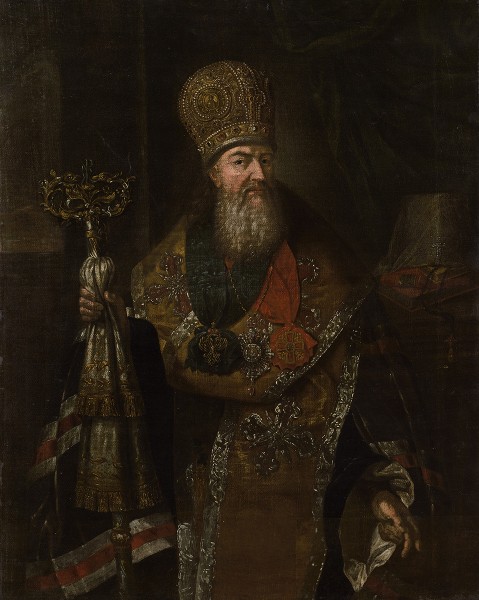The artist is unknown

Metropolitan Gabriel Petrov, in the world Petr Petrovich Shaposhnikov (1730–1801) – son of the Moscow Synodal Hypodakon. Graduated from the Moscow Slavic-Greek-Latin Academy. In 1758 he took tonsure and was appointed rector of the seminary and governor of the Trinity-Sergius Lavra. In 1763 he was granted to the bishops of the Tver diocese. From 1769 – Member of the Holy Synod. In the same year – Archbishop of St. Petersburg. In 1775 – Archbishop of Novgorod. From 1783 – Metropolitan, member of the Russian Academy.
Outstanding preacher and spiritual writer. Catherine II highly appreciated Gabriel. Under Paul I, he was first awarded, but then fell out of disgrace: in 1799 he took off his control of the St. Petersburg diocese, remaining only to Metropolitan Novgorod and Olonets, and retired to Novgorod. At the end of 1800, Paul fired him from these posts. Gabriel asked for permission to survive his century in Moscow, in the Simonian monastery, but he was denied. He died in Novgorod. He was buried in the limit of the Novgorod Sofia Cathedral. N. X. Unknown artist. SPb, 2012. With. 84.
It is known that thanks to Metropolitan Gabriel, many monuments of the ancient writing of Novgorod were preserved; He was involved in the opening of fresco painting in the ancient Church of St. George in old Ladoga in 1780. Member of the Imperial Academy of Sciences and Arts, chaired as a “primary member” at meetings in the absence of director Dashkova. With his participation and leadership, work began on compiling a dictionary of the Russian Academy.
Depicted in metropolitan vestment with the orders of St. Andrew the First -Called and St. Alexander Nevsky. It is possible that the portrait was written in connection with the awarding of it on November 9, 1796 (Gabriel was the first of the clergy by the gentleman of these orders). A similar portrait of 1795 (but without order signs) is stored in the State Museum Association “Artistic Culture of the Russian North” in Arkhangelsk. Portraits of this iconographic type, but in a white clobuk were very popular in the first half of the 19th century and were repeatedly reproduced in engravings. N. X. Unknown artist. SPb, 2012. With. 84.
Leave a Reply